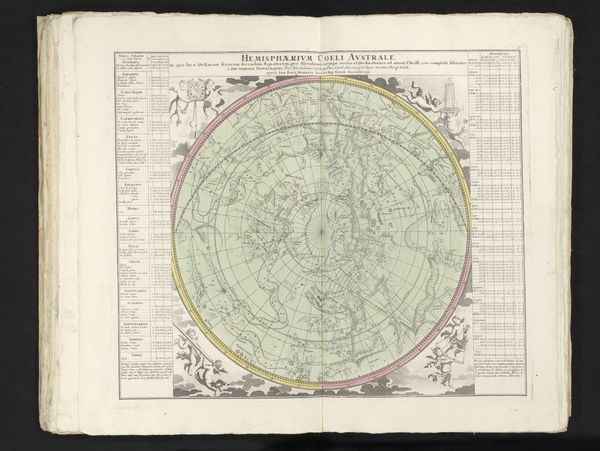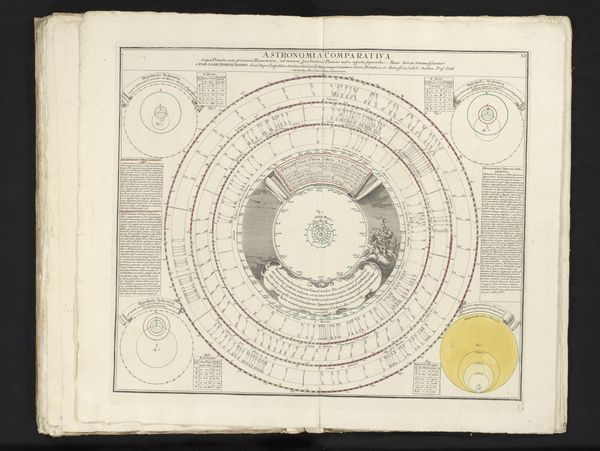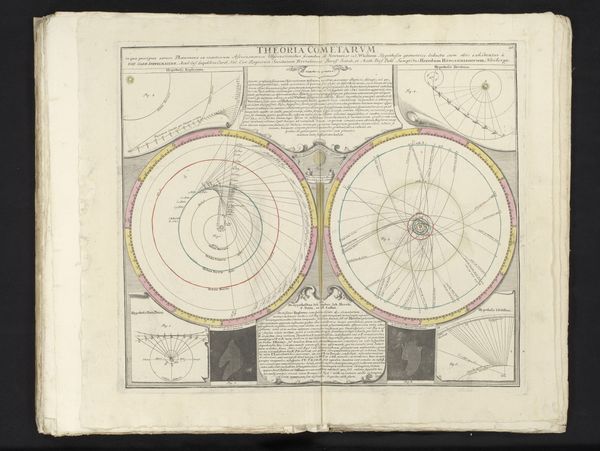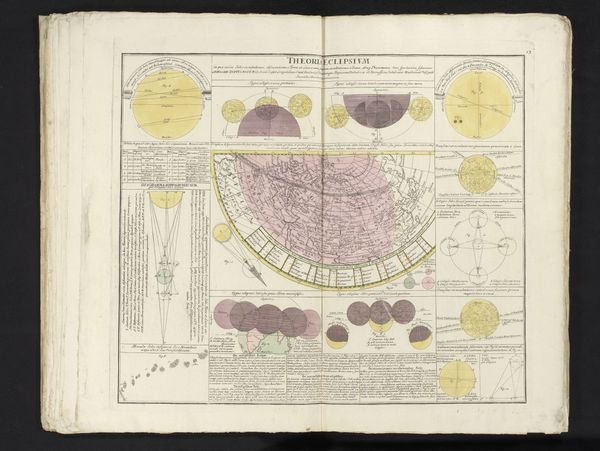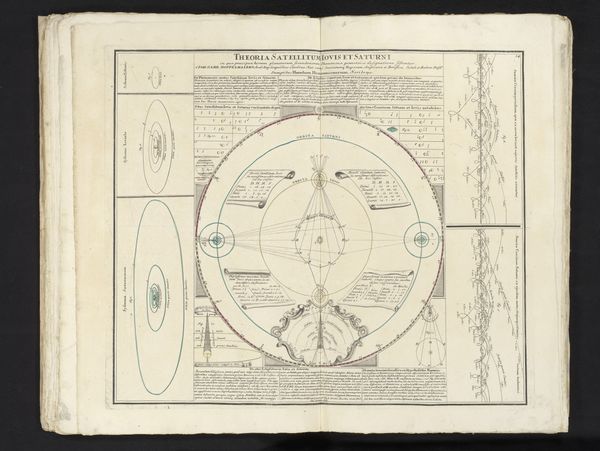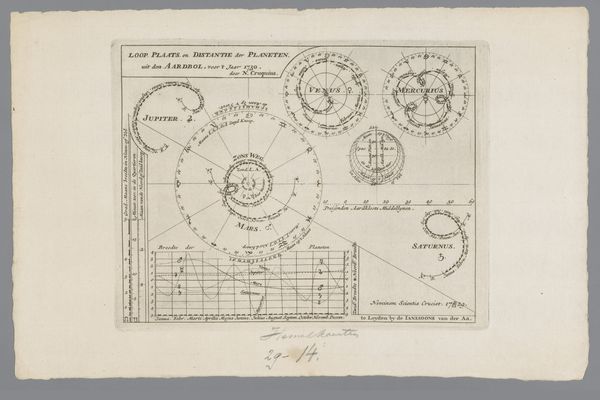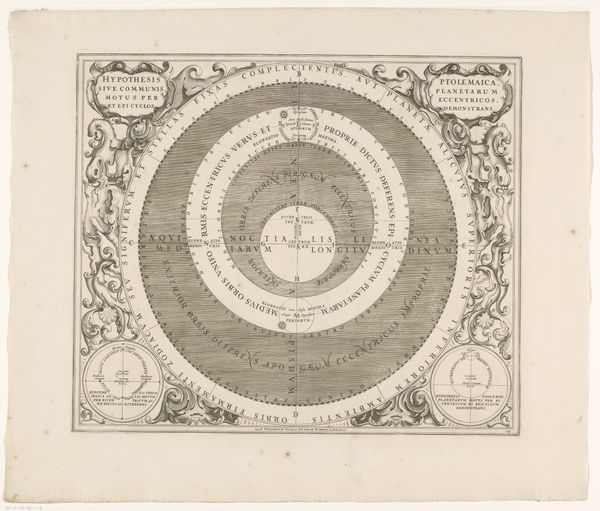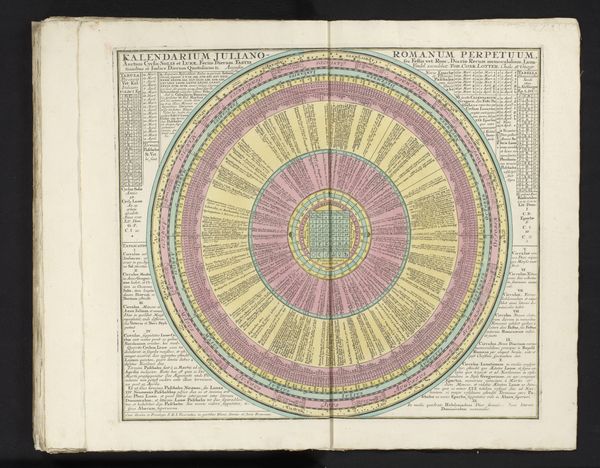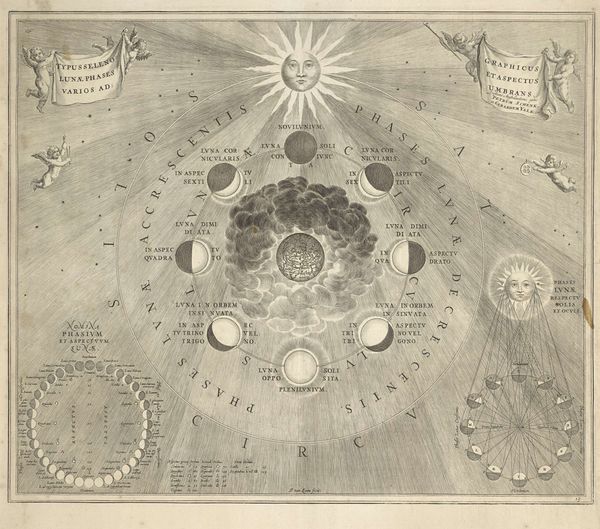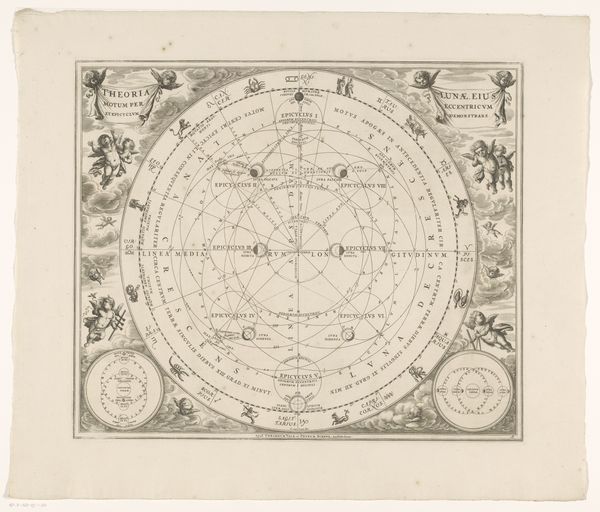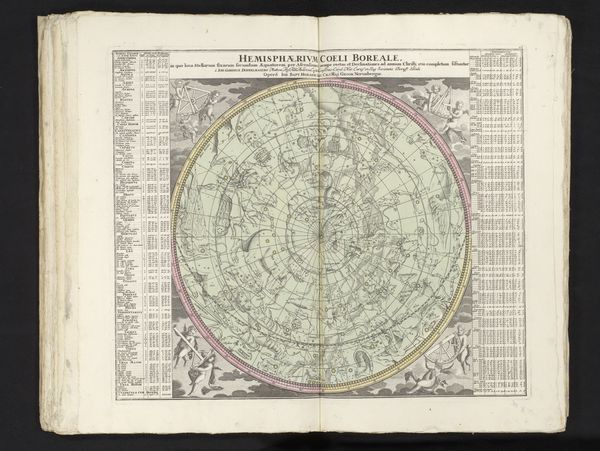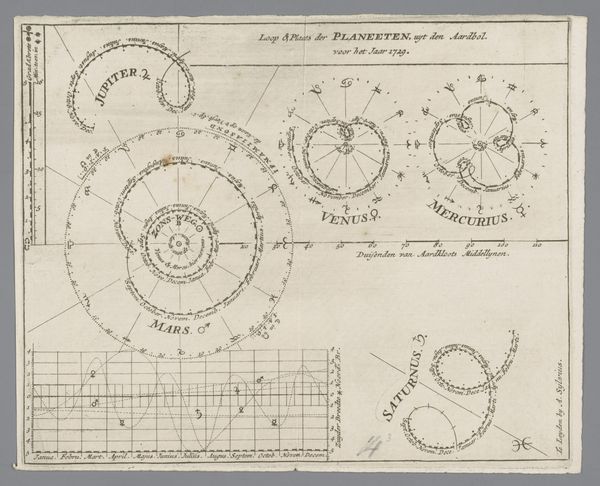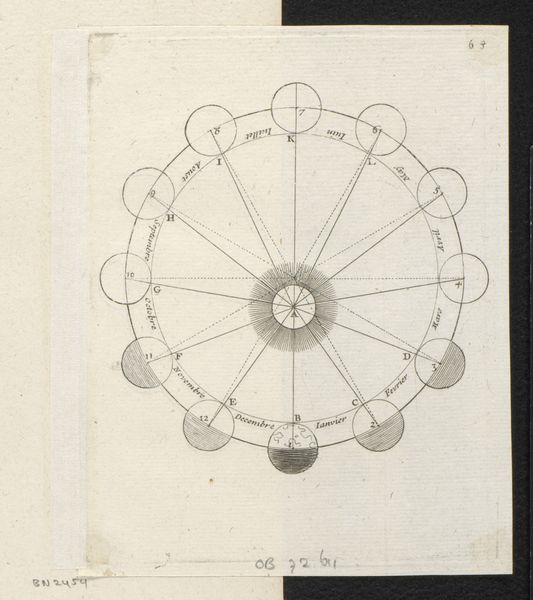
Uitleg en theorieën over verschillende astronomische verschijnselen 1742
0:00
0:00
drawing, print, paper, ink, engraving
#
drawing
#
allegory
#
baroque
# print
#
paper
#
ink
#
geometric
#
line
#
history-painting
#
academic-art
#
engraving
Dimensions: height 505 mm, width 588 mm
Copyright: Rijks Museum: Open Domain
Curator: Looking at this print, it strikes me first by the complexity and symmetry. It’s an incredibly detailed piece of draftsmanship. Editor: Indeed. What we have here is an engraving from 1742 titled "Uitleg en theorieën over verschillende astronomische verschijnselen," which translates to "Explanation and theories about various astronomical phenomena." It’s currently held at the Rijksmuseum. Curator: Notice the precise line work and the circular format – the way the concentric circles guide the eye inwards. Semiotically, it speaks to the then-dominant geocentric worldview. It imposes a clear visual structure on the cosmos, and it is a statement of reason over the seemingly irrational chaos of the universe. Editor: Absolutely, and it’s crucial to remember the context. This piece embodies the scientific awakening happening at this time. Images like this helped to make scientific ideas accessible. It reveals a drive to inform the public—part of the broader Enlightenment project of democratizing knowledge. This work exemplifies academic art through the use of history painting and allegory. Curator: I also detect allegorical representations that further enhance the symbolic reading. Look closely at the figures embedded in the central circle. Editor: Good catch! Considering that images were so often filtered by religious perspectives, notice the strategic insertion of angelic or divine beings—a crucial element to promote and legitimize this worldview in the 18th century. This was a delicate dance. Curator: It creates a fascinating tension. The artist balances empiricism and accepted dogma, reason, and faith within the composition. The visual language itself performs this reconciliation. Editor: Analyzing its social and institutional implications, it prompts the question: what role did artwork like this play in shaping public discourse around science and religion? The printing press really made this accessible. Curator: The meticulous attention to detail makes a clear statement on its era’s dedication to rational inquiry. Editor: Exactly. Looking back at this print gives me an enhanced understanding of the art as propaganda, if we use that word advisedly. Curator: I’m fascinated by how it encapsulates the visual representation of knowledge during that period. Editor: This print offers such a vivid and insightful snapshot into the history of science and society, doesn't it?
Comments
No comments
Be the first to comment and join the conversation on the ultimate creative platform.

